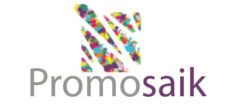By Kelly Garvin Rodriguez
Interpreting is not new. Ad hoc interpreters have been around since before the polyglot Sacagawea helped Lewis and Clark communicate with the Native Americans during their epic journey. Professional interpreting, however, is a relatively young field, but has grown steadily since its inception. Two factors drive this growth: patient need and legislation. As our profession grows in visibility and in numbers, so should our training. Doctors and facilities are compelled to employ our services, and should know they are getting their money. Further, the patient-provider relationship is a sacred space, and a good interpreter knows this instinctively. Our demeanor, word choice, and delivery all impact patient care. Preparation is paramount. In the last twenty years, there has been necessary improvement in training opportunities for healthcare interpreters. Yesterday’s interpreters had little formal training. Many were simply bilingual and helpful; some were children. Now, training programs range from one day seminars, to boot camps, to 40-hour intensives, even graduate level degree programs. The CMI exam is a watershed accomplishment; as an objective measure of competence, the CMI credential garners respect for its bearers. We, like other professions, adhere to a Code of Ethics and conduct ourselves with the decorum appropriate the position. All of these things bolster our credibility and the positive regard we want to inspire in our peers. And there is more we can do. As any professional, we strive to become experts in our field. Curiosity, coupled with enthusiasm for learning, is a hallmark of an engaged practitioner dedicated to optimal performance. Further education benefits the individual tremendously; his confidence grows along with his knowledge. Education benefits the profession as well, because our colleagues understand that we come equipped with a rigorous academic background. Opportunities abound for the inquisitive interpreter. The afore-mentioned boot-camps and intensives are essential for basic skills such as note-taking, memory exercises, and introductory material about body systems and medical terminology. After achieving CMI, though, more in-depth learning is in order. An interpreter can turn to community colleges for undergraduate Anatomy and Physiology courses. Some are available on-line, making learning convenient. Medical seminars are another source of up-to-date information. These are found at teaching hospitals and medical schools. Many diseases have organizations that sponsor educational events for patients and families, and are helpful for interpreters. Reading scientific journals, like Lancet, JAMA, Nature, or other peer-review publications, is an excellent way to stay current on trends in medicine. Websites are quick resources for information; try NIH and NCI. Some interpreters might find a particular disease so interesting that they concentrate on it, learning about current diagnostic methods, treatments and research efforts, becoming quasi-specialists in that arena. Ambitious educational standards prepare our people, enhance our respectability, and are consistent with the skilled experts that we aim to be. A commitment to professional development ensures that we begin our careers competent, and continue to serve our patients and our doctors well, as medical professionals prepared and eager to take our rightful place on the healthcare team.

